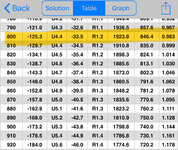Published BC numbers are just a starting point to use to verify your dope if you're using a ballistics app that only uses BC. AB using an average BC they gather from doppler. I can't speak for exactly what Hornady does
The they are using Doppler radar. Hornady’s BC’s are correct at the stated Mach. Mach 2.25 and Mach 2.0 work just fine for the terminal range of ELD-M and ELD-X. People need to stop listening to nonsense and believing that small differences in G1 BC are even noticeable or measurable in the field at mid long range (800’ish yards).
Almost no one should be adjusting the BC in an app unless they have a Doppler radar or a Oehler 89. Without that, there is no way one can detect a .005 G1 BC difference. You are changing something that you can’t measure or actually know is the cause and it will lead to issues. In the terminal
Image of bullets, use good Doppler radar derived BC’s and adjust MV. Any errors noticed at 800-1,000 yards (or farther) is due to MV, initial zero, loss of zero, or scope adjustment errors.
Here’s the 103gr ELD-X at 800 yards:
.512 G1 BC (Mach 2.25). 4.4 mils for elevation.

.498 G1 BC (Mach 1.75). The same 4.4 mils for elevation.

Good G1 BC’s absolutely result in the same data to max terminal range as G7 BC, CDM’s, 4DOF, etc.
This stuff is pole vaulting over mouse turds.
Using AB curves rather than a bc # seems to work real well most of the time for me. I imagine one could use 4DOF similarly? The published #'s I really only use for bench racing ballistics than actual firing solutions.
4DOF works the same as CDM



